
Want to learn more? This National Geographic Book on Owls is a great read!
The most common of these owls are the Great Horned Owl and the Burrowing Owl.
Oklahoma is a southern central state with a temperate subtropical climate. This means that the winters in the state are mild and the summers are hot and humid.
There are 35 different state parks across Oklahoma and 3 different national parks. These 3 national parks each have their own affiliated areas.
Now that we’ve looked at Oklahoma and what owls can be found there, lets take a look at each of the owl species in more detail.
Want to attract Owls to your yard? Take a look at our article!
What Owls can be seen in Oklahoma?
Table of Contents
1. Barn Owl
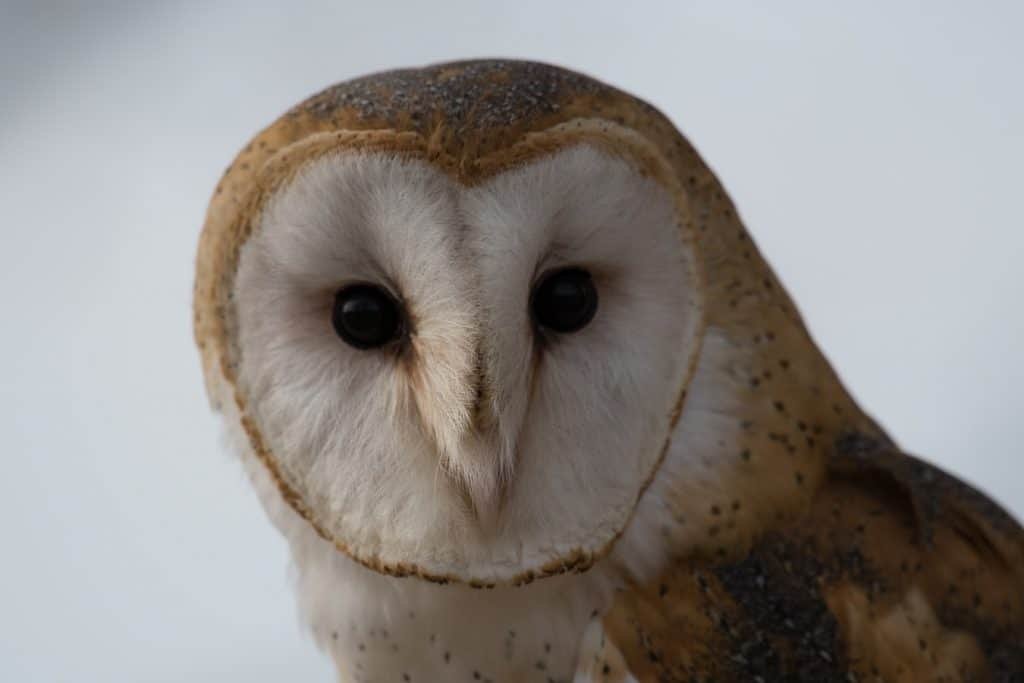
Wingspan
107 to 110 cm
Weight
430 – 620 g
Life Expectancy
Up to 4 years
Diet
Voles, Shrews & Mice
Barn Owls are medium in size and have long rounded wings. In certain lights, these owls can appear to be completely white, but their backs and wings are actually covered in buff and grey feathers.
These owls can commonly be found in areas of open grasslands and they have one of the widest ranges encompassing 48 states.
Barn owls are monogamous and will form breeding pairs that last for life. However, there have been reports of males mating with more than one female.
Males have a specific courtship display which involves them doing a move called a ‘moth flight’ wherein they hover in front of a female with their legs dangling.
The number of eggs per brood has a very wide range, with females laying between 2 to 18 eggs.
Oklahoma is one of the 48 states in which Barn Owls are permanent residents. These owls are most active during their breeding seasons and most of the recorded sightings appear to be in the North Western areas of the state.
2. Eastern Screech Owl
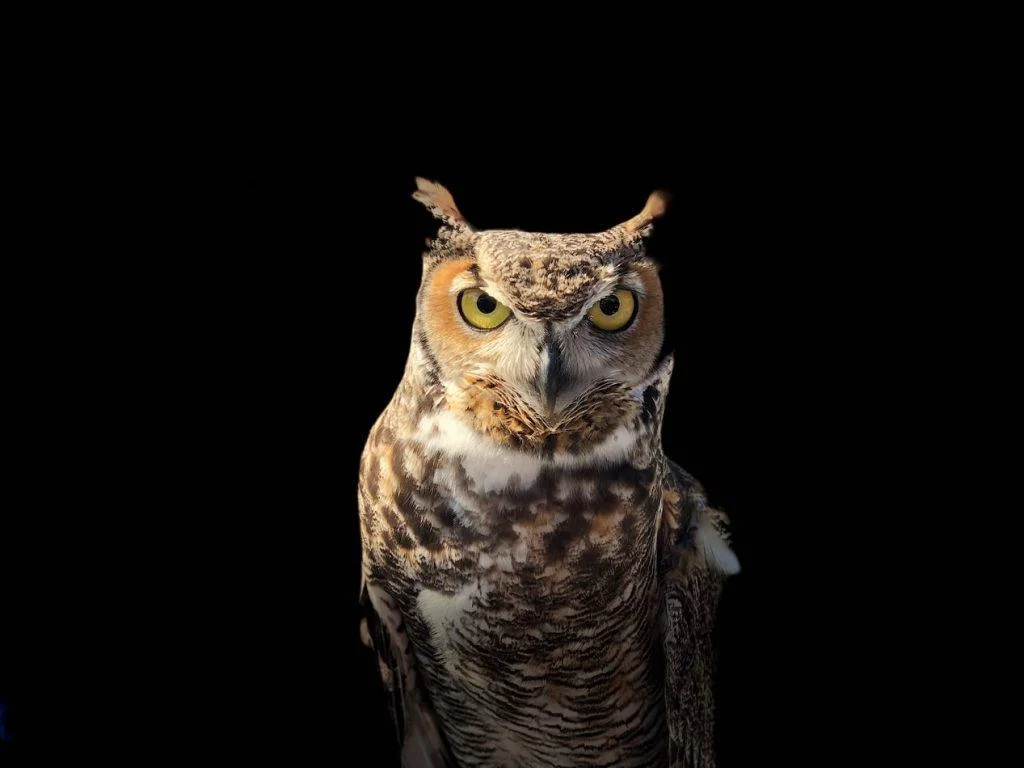
Wingspan
46 to 61 cm
Weight
160 g
Life Expectancy
14 years
Diet
Rats, Squirrels, Rabbits & Skunks
The Eastern Screech-Owl has a large head and a barely visible neck. Its body in short and stocky and they are covered in different shades of grey feathers that help them to camouflage well against the bark of trees.
They are very similar in appearance to the Western Screech-Owl. You will only see these owls in dense forest areas, and they benefit from nesting boxes.
These owls form long term pairings but in seasons of high prey abundance they male may mate with two females.
Each female will only produce one brood per season, and they lay 2 to 6 eggs per brood.
Their young will stay with the parents for a long while and are required to be fed by them for the first 10 weeks of their lives.
Despite having a largely eastern range, these birds can be seen in the state of Oklahoma in all regions and throughout the year.
The sightings of this bird are evenly distributed throughout the state with a slightly higher number in the south of the state.
3. Great Horned Owl
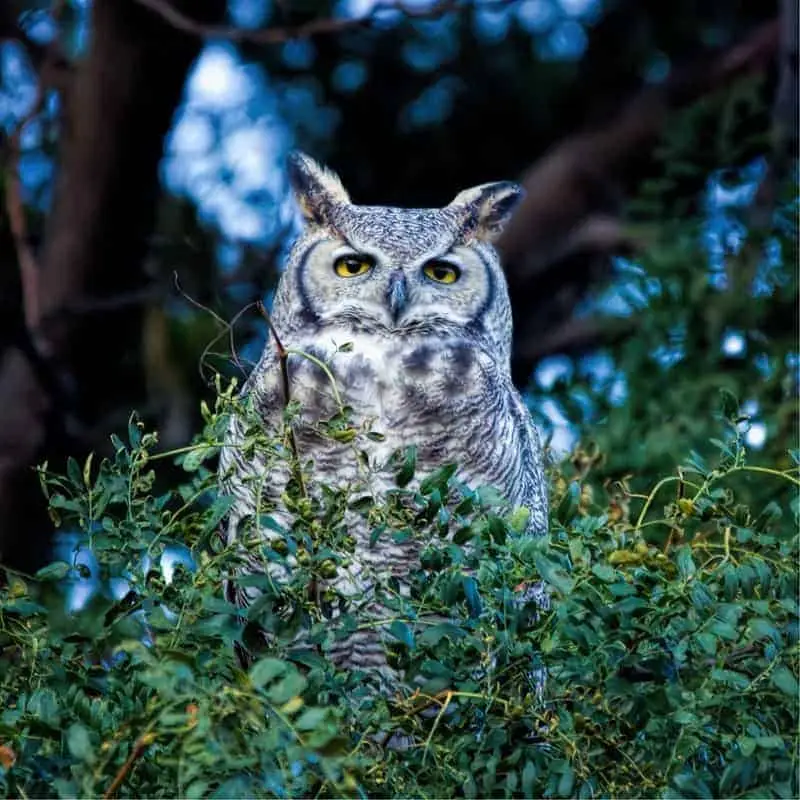
Wingspan
~140cm
Weight
1.4 kg
Life Expectancy
28 years old
Diet
Squirrels, Rabbits & Skunks
These owls are large in size and their bodies are covered in malted grey feathers whilst their heads are a rusty shade.
They have two prominent feather tufts on their head which resemble horns, hence their name.
You are most likely to see these owls in areas of dense forests but due to their varied range they can also be seen in urban areas. Great Horned Owls mate monogamously and appear to form long term breeding pairs.
They will stay in their territory together throughout the year, however, they will only roost together during the breeding seasons.
Both individuals in the breeding pair will help defend the territory from intruders and there have even been instances of these owls killing members of their own species.
These owls have an incredibly large range that includes all areas of Oklahoma and they are year-round residents in the state.
They are most active during their breeding seasons and most of the recorded sightings of this bird have been in the north west of the state.
4. Short-Eared Owl
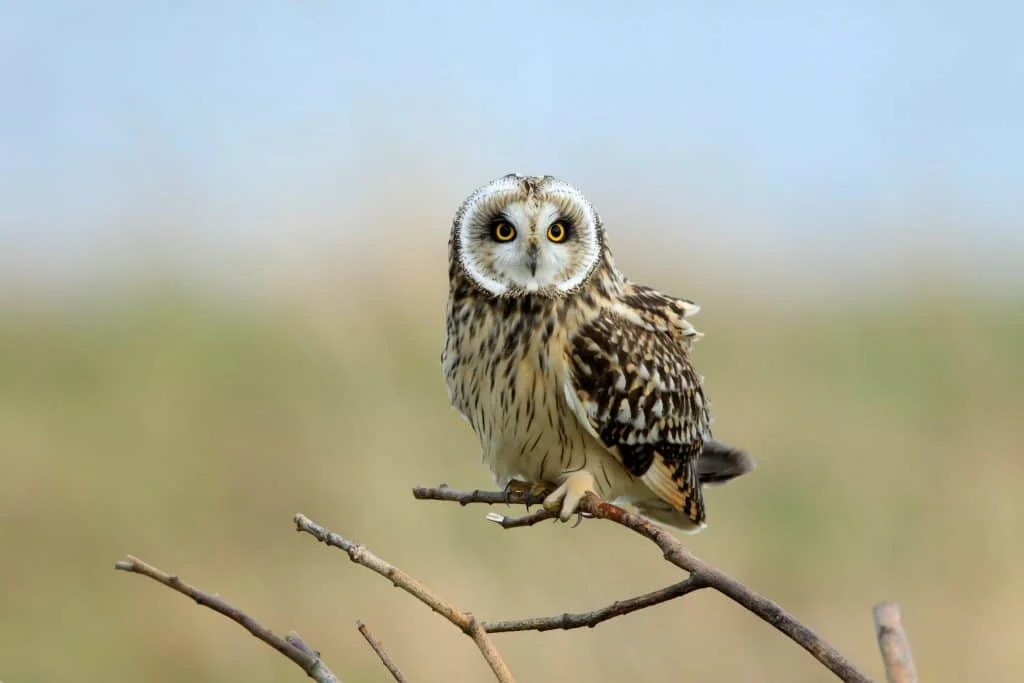
Wingspan
85 to 110 cm
Weight
206–475 g
Life Expectancy
4-12 years
Diet
Voles, Mice, Squirrels
This owl is named, much like the Long-eared Owl, for the shape of its ear tufts, they are so small they can barely be seen.
They have a medium sized body and have brown feathers spotted with buff that cover all of their bodies. You are most likely to see this owl in large areas of open grasslands.
Their level of activity and sleeping patterns changes depending on the season and they tend to be active at all hours of the day and night when it reaches the breeding season.
They will use the night to do some extra hunting as their courtship displays mainly take place during the daytime. After mating, the male’s primary role is to protect the female whilst she incubates the eggs.
They will do this by performing distraction displays to intruding individuals to deter them away from their nesting site and this is often done to animals of much bigger size.
These owls can be seen throughout all regions of Oklahoma, but they are not year-round residents.
They can only be seen in the state outside of their breeding seasons and most of the sightings of this bird are recorded in the central areas of the state.
5. Burrowing Owl
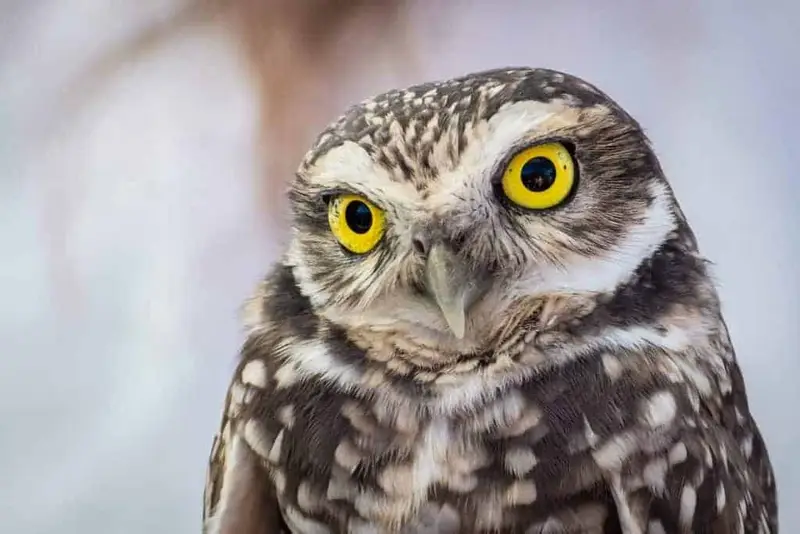
Wingspan
51-61 cm
Weight
140-240 g
Life Expectancy
10 years
Diet
Large Insects and Small Rodents
This small species of owl has brown and white feathers, with the white feathers sometimes forming a large patch of white on their bellies.
Burrowing Owls form loose colonies with a large number of individuals, and they stay together during the breeding seasons. Outside of the breeding seasons, these colonies can reach numbers of 100 individuals.
Whilst it is not known whether they form long term breeding pairs, it is known that they remain monogamous during the mating season.
After courtship, females stay in the burrow to protect the eggs whilst males defend the territory using their unique calls and wing displays.
These birds hunt over open areas of grasslands and have been observed hunting during the day and the night.
These birds can be seen throughout the state but only during their breeding seasons.
They will be most active at dawn and most of the recorded sightings of this bird have been in the western half of the state.
6. Barred Owl
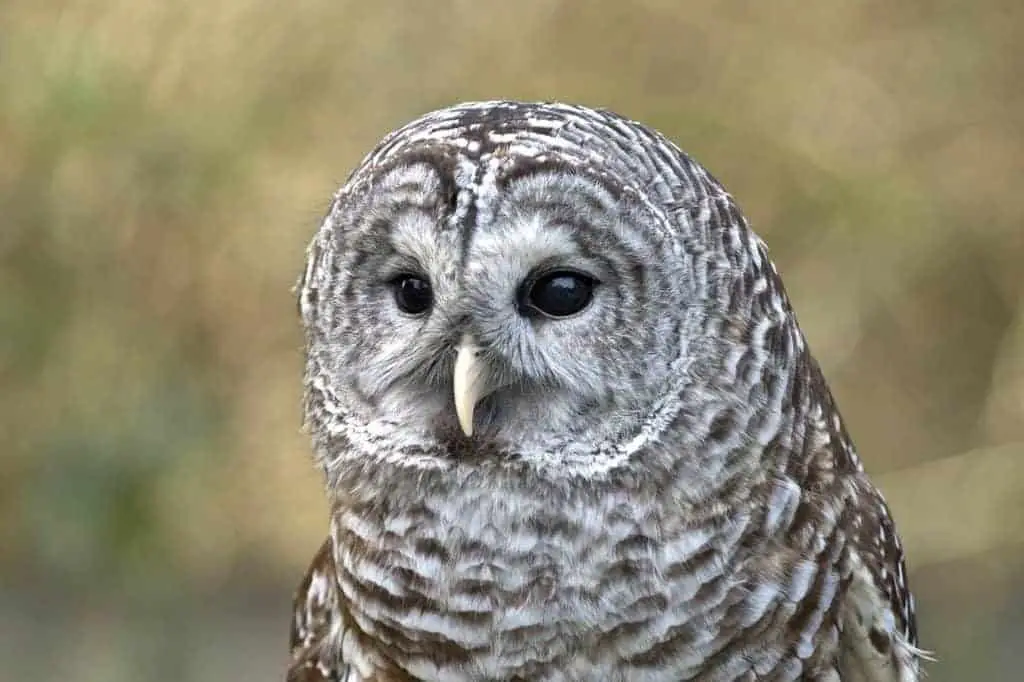
Wingspan
96-125 cm
Weight
468-1,150 g
Life Expectancy
10-23 years
Diet
Small mammals
The barred patterns on this owl’s wings made by its feathers, that are brown and white in colour are what gives this owl both its name and its most identifiable feature.
You can see these owls in areas of mixed woodlands, usually ones that are close to swamp areas or bodies of water.
These owls spend their day roosting and will hunt at night which is usual behaviour for lots of owl species.
Both males and females are defensive of their territory and they form breeding pairs that remain monogamous during the breeding seasons.
It is thought that these breeding pairs are long term and they are thought to mate for life although this is not fully confirmed.
These owls can be seen in Oklahoma throughout the year, but their range only extends through the eastern half of the state.
The highest amount of recorded sightings are in the central regions of the state.

More Articles.

Best Camera For Bird Watching 2020
Article Summary: Best Budget Camera: Nikon D500 DX-Format Digital SLR Best Mid-tier Camera: Canon EOS
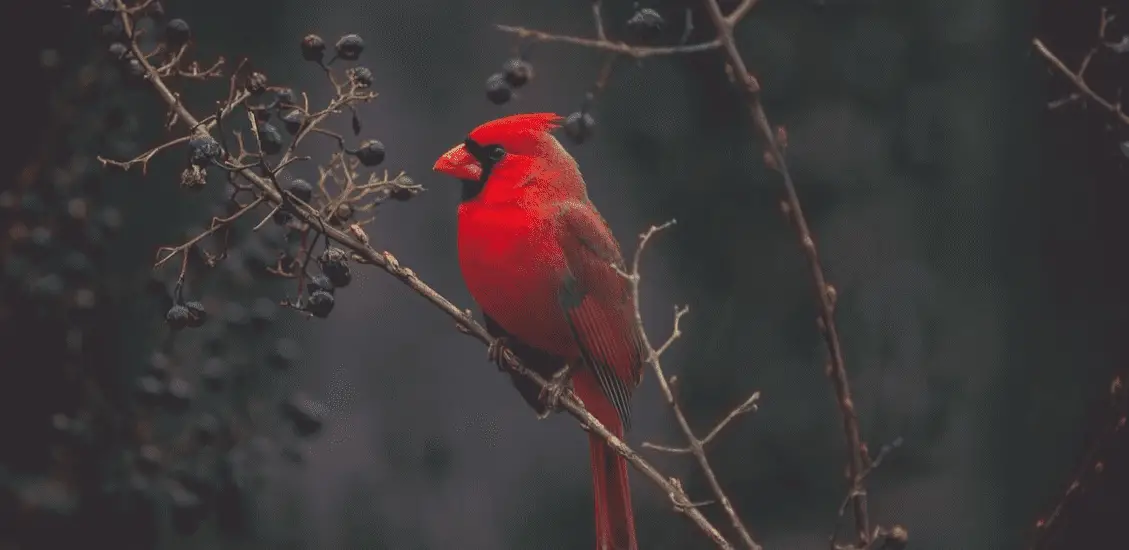
What does it mean when you see a Cardinal?
There are some truly amazing things that the cardinal can represent in your life, whether
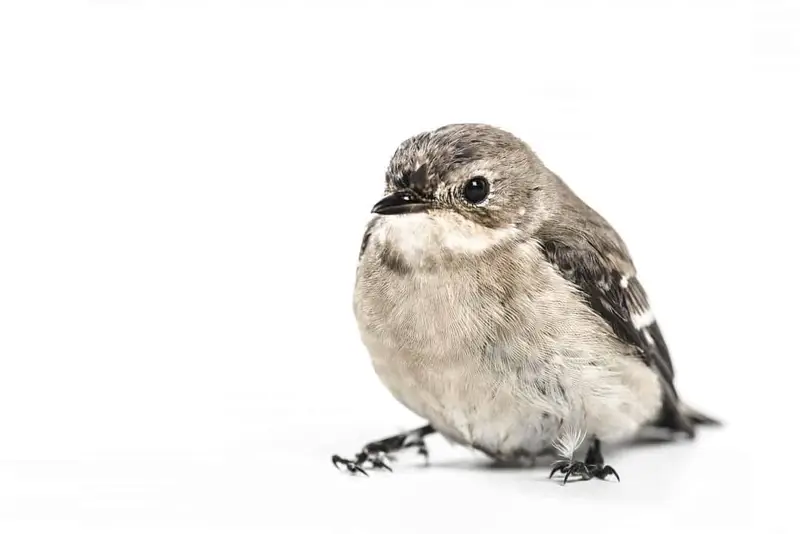
How to attract Chickadees to your yard?
Chickadees, despite their strange name, are a staple of the countryside across all of North

About Us
We are avid bird-watchers who recently retired, allowing us more time to travel the world. Fortunately, we have managed to visit numerous countries around Europe, Asia, and America. Watching and photographing birds has been a passion for many years and we are making the most of the extra time on our hands!
